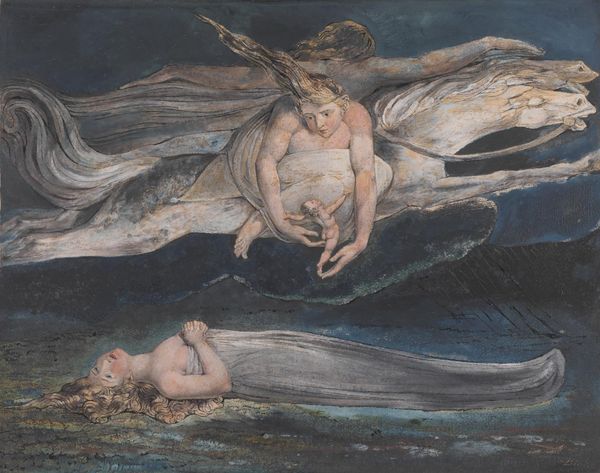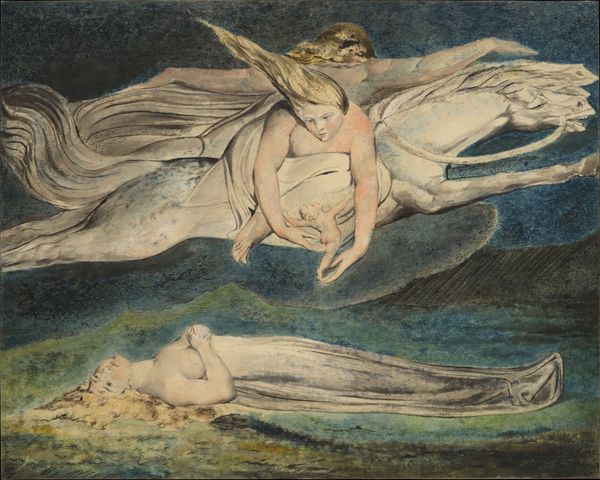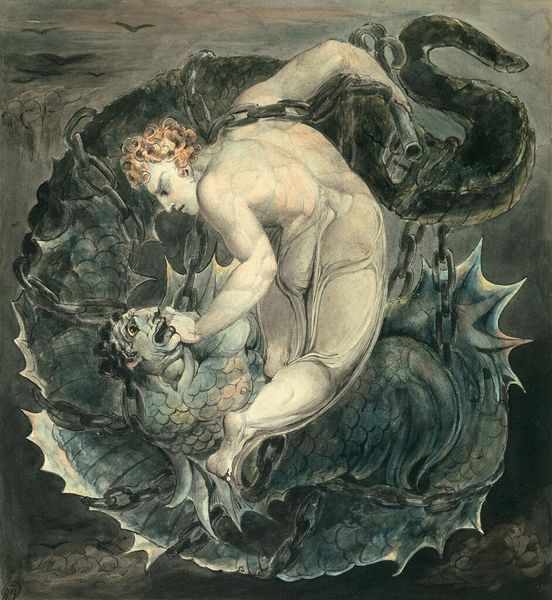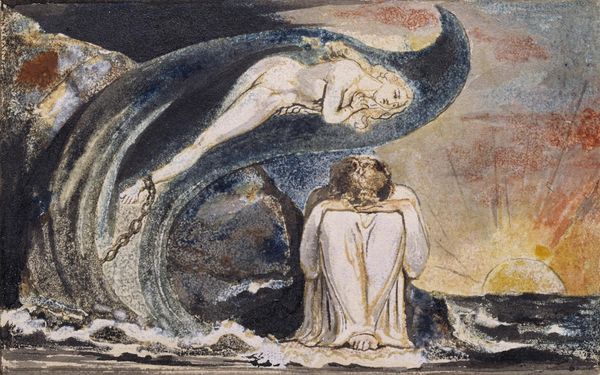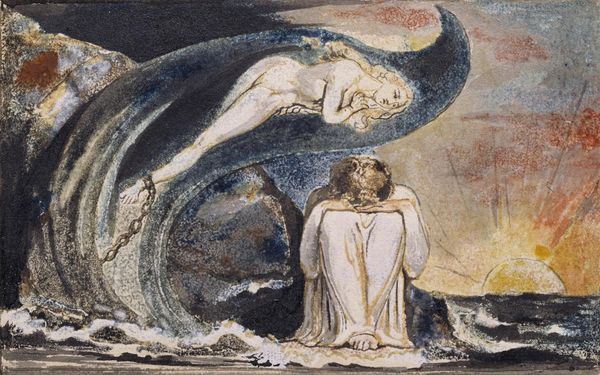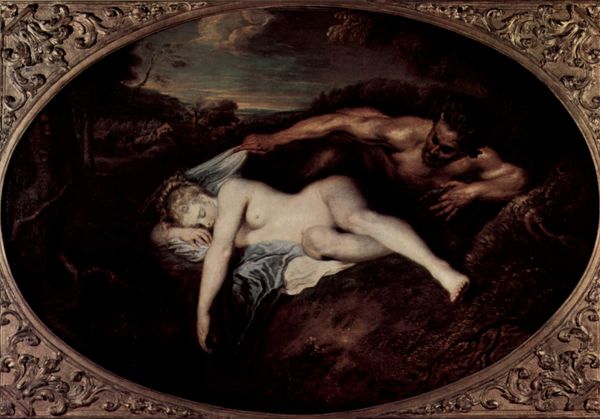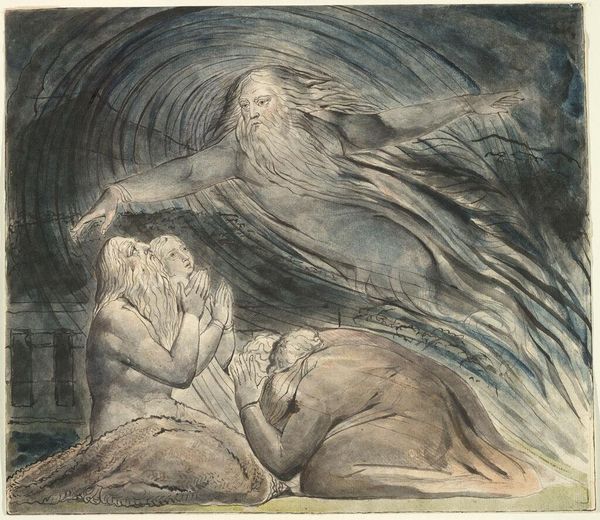
Dimensions: support: 425 x 539 mm
Copyright: NaN
Editor: So, this is William Blake's "Pity," and it’s at the Tate. The mood feels melancholic, almost ghostly, with figures that seem to float. How do you interpret this work? Curator: For me, "Pity" embodies Blake's visionary approach. It's as if he's peering into the soul, isn't it? The ethereal figures, the swirling forms... it's not just about sorrow. There's a defiance there, a wrestling with the sublime. It reminds me of a dreamscape where pain and hope are intertwined. What do you think of the use of light? Editor: It's striking how the light illuminates the figures against the dark background, creating a sense of drama. I hadn’t considered the element of defiance before. Curator: Exactly! Blake wasn't one for passive acceptance. He used pity, and all these emotions, as a launchpad for something greater. It makes me think about how we can find beauty, even in the face of sorrow.
Comments
Join the conversation
Join millions of artists and users on Artera today and experience the ultimate creative platform.
tate 8 months ago
⋮
This picture is based on the playwright William Shakespeare’s imagery in Macbeth. The play describes: ‘pity, like a naked newborn babe / Striding the blast, or heaven’s cherubin horsed / Upon the sightless couriers of the air, / Shall blow the horrid deed in ev’ry eye’. Blake’s visualisation of ‘pity’ takes Shakespeare’s words literally. Underneath the floating figures representing ‘pity’, Blake has included a young woman lying on the ground, her hands clasped as though in prayer. She may represent the infant’s mother, or someone influenced by pity. Gallery label, October 2023
